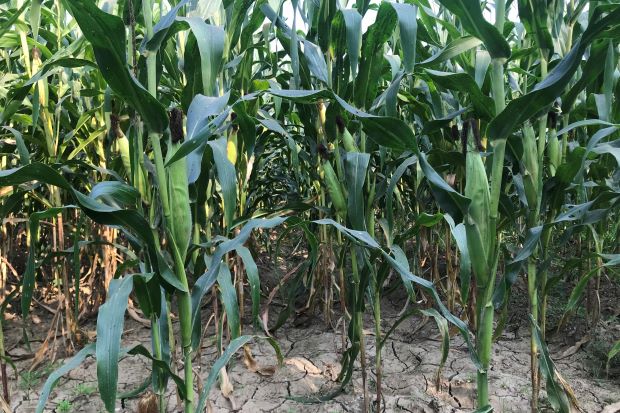
Feeding the beast

Almost 40% of the world’s harvest is fed to livestock but only 12% of those feed calories ultimately contribute to the human diet as meat and other animal products.1
In the US, nearly 70% of crops are fed to animals – if these crops were fed directly to people, they could feed 800 million.2
Meat is an inefficient way of supplying human nutrition. An animal consumes far more feed than it produces in meat. After the land has been cleared, the crops must be planted, fertilised, irrigated, sprayed with insecticide and harvested, and each of these steps – along with the manufacture of the machinery, the fertiliser and insecticide – consume fossil fuels. It takes 2.2 calories of fossil fuels to make 1 calorie of protein from soybeans, corn or wheat, but 25 calories of fossil fuels to make one calorie of protein from all meat – more than ten times as much.3
Beef is especially wasteful; the production of 1lb of soybeans emits 0.26lbs of carbon dioxide; 1lb of beef makes an exponentially greater 14.8lbs.
In many parts of the world, such as Northern Thailand, the burning of waste from crops grown to feed livestock creates serious air pollution.
-
REFERENCES1.Cassidy ES, West PC, Gerber JS, Foley JA. Redefining agricultural yields: from tonnes to people nourished per hectare. Environ Res Lett. Published online August 1, 2013:034015. doi:10.1088/1748-9326/8/3/034015
-
2.Pimentel D. Livestock production: energy inputs and the environment. Proceedings of the 47th Annual Meeting of the Canadian Society of Animal Science. Published online 1997:24-26.
-
3.Pimentel D, Pimentel M. Sustainability of meat-based and plant-based diets and the environment. The American Journal of Clinical Nutrition. Published online September 1, 2003:660S-663S. doi:10.1093/ajcn/78.3.660s